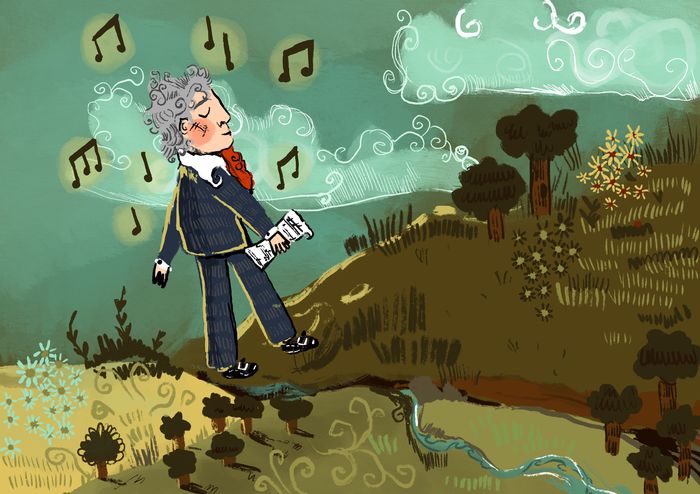New year, no men: taking down Spotify’s gender bias
Anna Herbert recounts her challenging attempt to combat streaming’s gender listening gap

This year, my New Year’s resolution was to give up listening to men sing. When James Brown sang ‘This is a man’s world’ in 1966, he painted a pretty accurate image of the music industry. 60 years on and the sector still has a way to go to reach gender parity. Female artists hold just over a quarter of the share of streams in the UK.
When a quick count of my Spotify stats at the start of the year revealed that over 75% of my top artists were men, I was disappointed but unsurprised. Subconsciously I had subscribed to a pre-existing bias running through the music industry prioritising men’s voices, words and music: the gender listening gap. So, naturally, I set off on a mission to single-handedly dismantle the structural misogyny of the music industry.
“For a month, I have (nearly) only listened to female artists, ditching Steely Dan in a quest to find my very own Steely Danielle”
For a month, I have (nearly) only listened to female artists, ditching Steely Dan in a quest to find my very own Steely Danielle. My listening history reveals a chain of ‘Women of’ playlists, from folk to jazz to classical rock. My friends have humoured me dutifully, skipping songs by men on our pres playlists and sending me artist recommendations of women I might like. I must confess to the occasional slip up, with my fondness for playing Absolute Radio in the background proving to be my main downfall. For the most part, however, it has been women who have provided the soundtrack to my January.
Some digging into streaming data has left me shocked at the extent of the gender listening imbalance. At the end of 2023, Everynoise reported that just under a third of women’s streams go to female or mixed gender artists. That in itself does not sound particularly great until you compare it to men’s listening patterns, with less than a fifth of songs men stream being from female or mixed gender groups! This disparity is then reinforced by an algorithmic bias, as profit-driven streaming platforms are more likely to promote male artists in programmed listening, who are considered to have more cross-gender appeal.
The imbalance in streaming patterns is not just gender dependent, it is also genre dependent. A quick grilling of a couple of my friends reveals, rather predictably, that those who listen to pop are more likely to listen to female artists than those preferring genres dominated by men such as rap, folk, and rock. Pop’s popularity amongst women accounts for the ability of female artists to succeed in the genre, but this can come at the expense of the legitimacy of pop, a genre often seen as ‘bad’ music.
“Women face significant barriers to entry and success in the music industry, including discrimination, harassment, and unequal pay”
Spotify has pledged its commitment to gender equity through their Equal Hub; a collection of playlists and ‘Equal Ambassadors’ to support women in the industry. Yet I have been disheartened by the amount of effort it has taken me to listen to more women this month. Whilst I have appreciated Spotify’s curated playlists centring women’s voices, I find them relatively narrow, focusing on a small range of already pretty well-known female artists. Spotify seems content with containing women to their own ‘Equal’ category, placing the onus on the listener to actively seek them out. Streaming platforms must take a more holistic approach to gender equality, to ensure users are also passively exposed to more diverse music. Music by underrepresented groups must be integrated into programmed music promoted to listeners.
This article barely scratches the surface of the music industry’s deep rooted inequality. Whilst I’ve been preoccupied by the gender gap in my listening history, things get a lot worse for women under the surface. Last year, a report for the House of Commons found that women represent 14% of songwriters, whilst the Musician’s Union discovered that women make up only 24% of the industry’s producers. Women face significant barriers to entry and success in the music industry, including discrimination, harassment, and unequal pay, all facilitated by an ongoing ‘boys’ club’ culture. Ultimately, the industry has a long way to go to reach gender parity, and its systemic inequality will not be fixed by a few overly-enthusiastic listeners changing their patterns of consumption, but structural overhaul.
A month of women in my headphones has honestly made minimal difference to my everyday life, outside of the added hassle of finding new music to listen to, and the subtle sense of superiority that has accompanied discussions with friends. Now January is over, I have reintegrated men into my listening rotation, but they will be interspersed amongst a wide range of newly discovered women. So, whilst the music industry’s gender inequality may run deeper than the streaming patterns of the average Spotify user, I would still suggest that if men soundtrack your life currently, consider branching out and listening to some more women. You might find that they are not half bad after all.
Want to share your thoughts on this article? Send us a letter to letters@varsity.co.uk or by using this form.
 News / Government announces £400m investment package for Cambridge25 October 2025
News / Government announces £400m investment package for Cambridge25 October 2025 News / Cambridge launches plan to bridge ‘town and gown’ divide27 October 2025
News / Cambridge launches plan to bridge ‘town and gown’ divide27 October 2025 News / Climate and pro-Palestine activists protest at engineering careers fair25 October 2025
News / Climate and pro-Palestine activists protest at engineering careers fair25 October 2025 News / Cambridge don appointed Reform adviser23 October 2025
News / Cambridge don appointed Reform adviser23 October 2025 Arts / Why is everybody naked?24 October 2025
Arts / Why is everybody naked?24 October 2025









